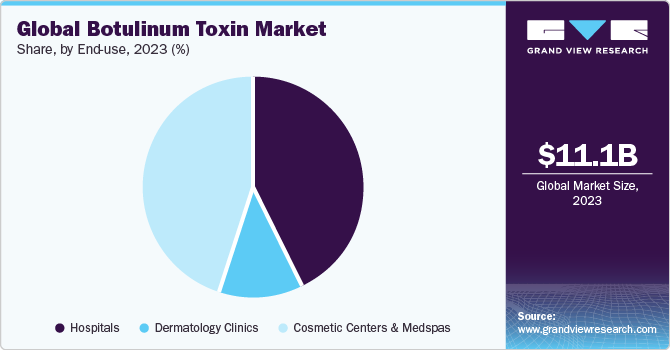Global Botulinum Toxin Market Overview
The global botulinum toxin market was valued at USD 11.1 billion in 2023 and is projected to reach USD 21.1 billion by 2030, expanding at a compound annual growth rate (CAGR) of 9.8% from 2024 to 2030. Botulinum toxin is a protein-based neurotoxin derived from the bacterium Clostridium botulinum. It works by selectively inhibiting the release of acetylcholine from nerve endings, effectively blocking neural transmission when injected into muscle tissue.

Botulinum toxin has become one of the most significant innovations in modern medicine and cosmetology. Its adoption has grown rapidly over the past decade, making it one of the most widely performed aesthetic treatments globally. Increasing concern with personal appearance in both developed and emerging economies is driving a surge in cosmetic procedures.
Market growth is supported by the availability of various commercial formulations, including Botox, Xeomin, Dysport, and others. These products are frequently used in aesthetic applications such as the treatment of glabellar lines, forehead lines, and chemical browlifts. While multiple Type-A products are widely available, Myobloc remains the only Type-B product currently on the market.
Order a free sample PDF of the Botulinum Toxin Market Intelligence Study, published by Grand View Research.
Key Market Trends & Insights
- North America led the global market in 2023, accounting for a 46.9% revenue share, and is expected to reach USD 5.1 billion by 2030. Growth in this region is driven by higher disposable income and an increasing number of cosmetic procedures. For instance, the American Society of Plastic Surgeons (ASPS) reported 1.3 million botulinum toxin procedures in 2019 alone.
- By end-use, cosmetic centers and medspas held the largest share at 44.5% in 2023 and are projected to grow at a CAGR of 10.2%. The rising popularity of aesthetic treatments in dermatology clinics and medspas, coupled with increased consumer interest, supports the expansion of this segment.
- Based on product type, botulinum toxin Type-A dominated the market with a 98.8% share in 2023. This segment is expected to continue expanding due to its advantages such as minimal pain, absence of bleeding, and no visible scarring. Additionally, Botulinum toxin Type-A is increasingly used in the treatment of chronic migraines, tension-type headaches, and various neurological disorders.
- The aesthetic application segment is projected to grow at a CAGR of 10.2% during the forecast period. Rising awareness of cosmetic appearance and rapid technological advancements in both developed and developing markets are contributing to a surge in aesthetic procedures.
Market Size & Forecast
- 2023 Market Size: USD 11.1 Billion
- 2030 Projected Market Size: USD 21.1 Billion
- CAGR (2024-2030): 9.8%
- Leading Region (2023): North America
- Fastest Growing Region: Asia Pacific
Key Companies & Market Share Insights
The botulinum toxin market is highly competitive and heavily regulated. Leading industry players continue to focus on strategies such as product innovation, strategic alliances, joint ventures, and advanced service offerings to strengthen their market positions.
A notable example is a July 2020 collaboration between Tenjin Pharma and Merz Pharma, which involved the sale of Xeomin (incobotulinumtoxinA) by Tenjin Pharma in 50, 100, and 200 unit doses. This product was approved by Japan's Ministry of Health for treating lower limb spasticity. The partnership allowed both companies to broaden their product portfolios and enhance revenue streams through targeted therapeutics.
Key Players
- Ipsen Group
- Allergen, Inc.
- Metabiologics
- Merz Pharma
- US Worldmeds
- Evolus
- Galderma
- Lanzhou Institute of Biological Products
Explore Horizon Databook – The world's most expansive market intelligence platform developed by Grand View Research.
Conclusion
The global botulinum toxin market is poised for substantial growth through 2030, driven by increasing cosmetic awareness, expanding medical applications, and rising disposable incomes. North America currently dominates the market, while Asia Pacific is expected to experience the fastest growth. Key players are capitalizing on rising demand by introducing innovative products and expanding into new therapeutic areas. As technological advancements and aesthetic preferences continue to evolve, the demand for botulinum toxin-based treatments—both cosmetic and therapeutic—is likely to see sustained momentum in the coming years.





